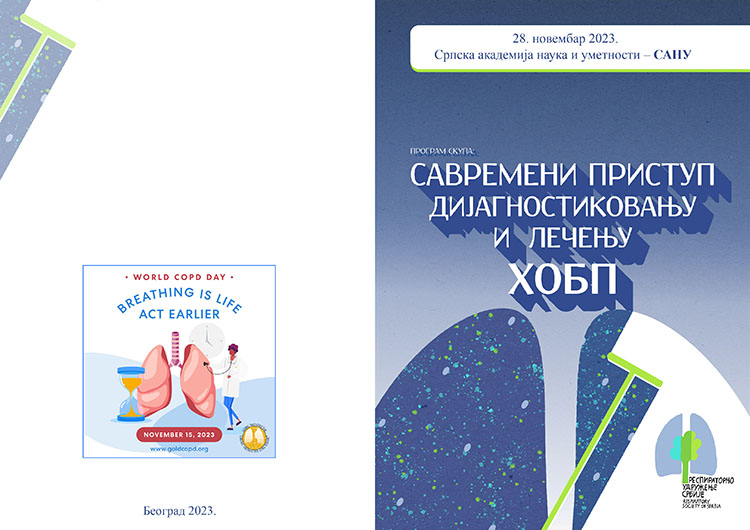CONTEMPORARY APPROACH TO COPD DIAGNOSIS AND TREATMENT
The scientific conference titled ‘Contemporary Approach to COPD Diagnosis and Treatment’ which aims to raise awareness on prevention possibilities and treatment of chronic obstructive pulmonary disease (COPD) that are at more at our disposal, opens at the SASA Grand Hall, on Tuesday, 28 November, at 5 p.m.
Chronic obstructive pulmonary disease is characterized by the narrowing of lung airwaves (Bronchoconstriction) which is not completely irreversible but is usually progressive and connected to abnormal inflammatory lung response to harmful particles and gases which are inhaled. There is a significant connection between it and morbidity since up to 4 – 6 % of adults in Europe have COPD, as well as mortality since it is the third cause of death in the world. This serious disease is a permanent hindrance to a health system, patients and their surroundings, and it can be prevented by risk management control, such as smoking cigarettes and related products, earlier asthma, chronic coughing, long and intensive, occupational and environmental exposures.
The disease presents itself through difficult effort management which is gradually intensified, along with dyspnea during physical exertion, cough, sputum production, wheezing and extrapulmonary symptoms. COPD also has system manifestations caused by system inflammation, tissue hypoxia, oxidative stress, and hormone or electrolyte imbalance. The most frequent comorbidities are chronic heart failure, ischemic heart disease, osteoporosis, depression, diabetes, loss of muscle mass, weight loss and lung cancer. Given that the intensity of the mentioned problems gradually and slowly increases, numerous patients are not aware of the disease, which heightens the percentage of untimely COPD diagnosis. Many patients call on their physicians when they lose as much as 50% of lung capacity, since COPD progression is frequently slow so many patients are not even aware that their condition is getting worse.
Nowadays, this disease is treatable. Disease prevention includes the removal of harmful substances. Timely and regular drug treatment, as well as adequate non-pharmacological treatment measures (quitting smoking, physical exercise, dieting), can slow down the deterioration of lung function, increase physical fitness and the quality and length of life, and reduce the number of medical inpatient treatments. This disease can also be put under control by the prevention of risk factors at both individual and population levels, by united actions of a health system and non-health sector, and by early detection and preventive interventions.
A live stream is available at LIVE STREAMING

